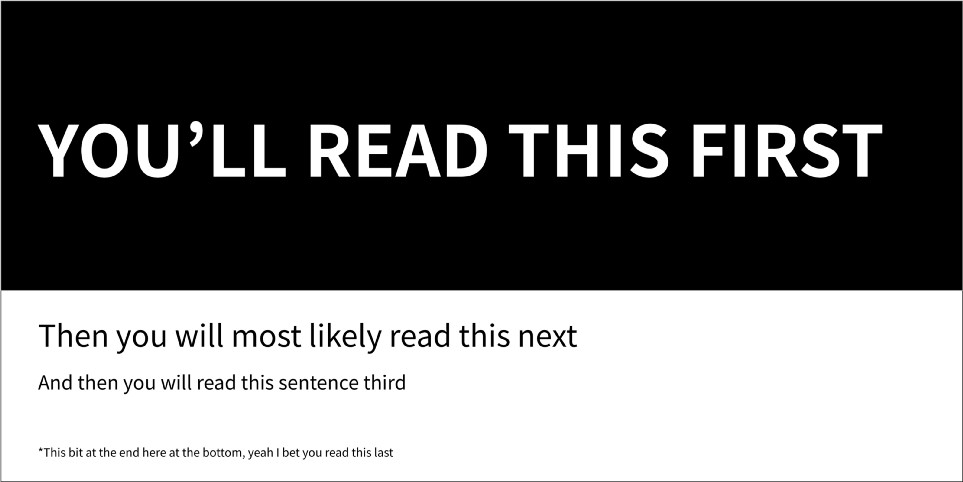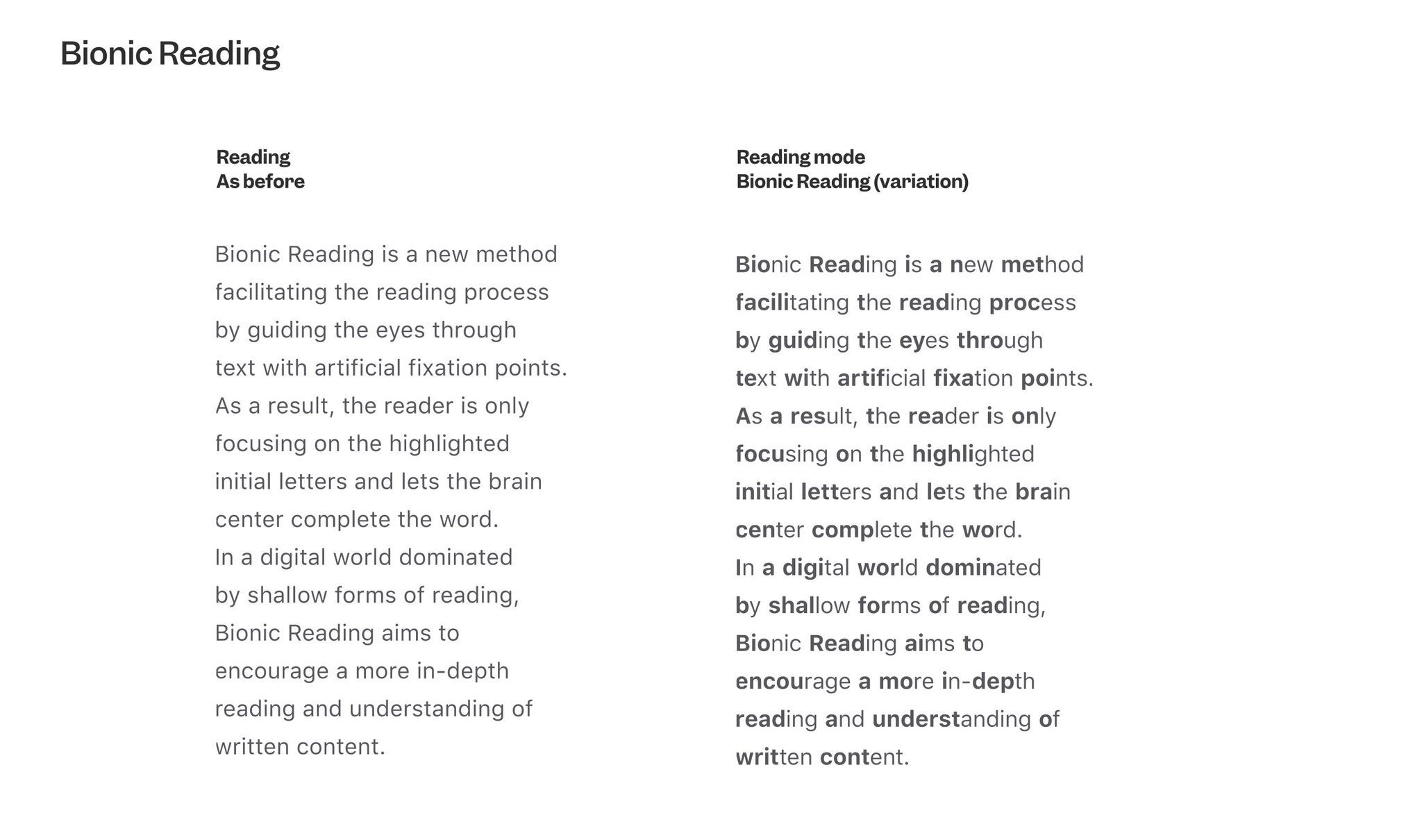The Bionic Reading: is it useful?
tl;dr
“While Bionic Reading enhances legibility, you must learn when to use it.”
Our brains can be tricked. And typography is one of most popular ways to hack our brain. See the image below for example.

Typography Hierarchy
People have been experimenting with various typography to explore how it influences our brains. The underlying goal of using typography to hack our brains, however, is reliant on our objectives, that is what we want to achieve with a certain method. It's evident that we can't have a one-size-fits-all typography. Nevertheless, there are some superpowers we'd like to have when it comes to reading, such as, reading faster. Being able to increase our reading pace can save us a lot of time while also allowing us complete the books that have been lying around and longing to be finished! This is where comes the magic of Bionic Reading.

An Example of Bionic Reading
But, how does it speed up reading ability? Well, the fundamental working principle behind this method is hacking "our brains can read faster than our eyes". When we read a plain text, our eyes cannot differentiate words and so our brain scans each word in its entirety and then processes it to make it comprehensible to us. This whole process can slow down our reading speed. Highlighting the initial couple of letters of a word, on the other hand, makes it apparent to our eyes, so we read only those letters, and then the magic happens. Our brains automatically concatenates the remainder of that word and pace up the process. This highlighting creates a more fluid and faster reading experience, which is just fantastic.
Should you, however, use it more often? Well, that depends. Bionic Reading makes our reading experience more fluid and effortless, while simultaneously lowering our brain's cognitive load. This is a problem if we want to retain the information in the future. Furthermore, the ease of use of Bionic Reading leads to a shallow grasp of the concepts. In this era of Web 2.0 or social media era, our ability to concentrate and comprehend has already been weakened. We are simply being bombarded with loads of information in a short span of time. We are racing to consume more and more but in less time. This is a concern, especially if the topic necessitates a deeper understanding and future retention. Therefore, for material that is important to us and must be retained later (e.g., text books, concepts), we should exert extra effort and slow down a little. There is an article that illustrates why on purpose using a font that is difficult to read can help us remember things.
To learn more about this method: bionic-reading.com